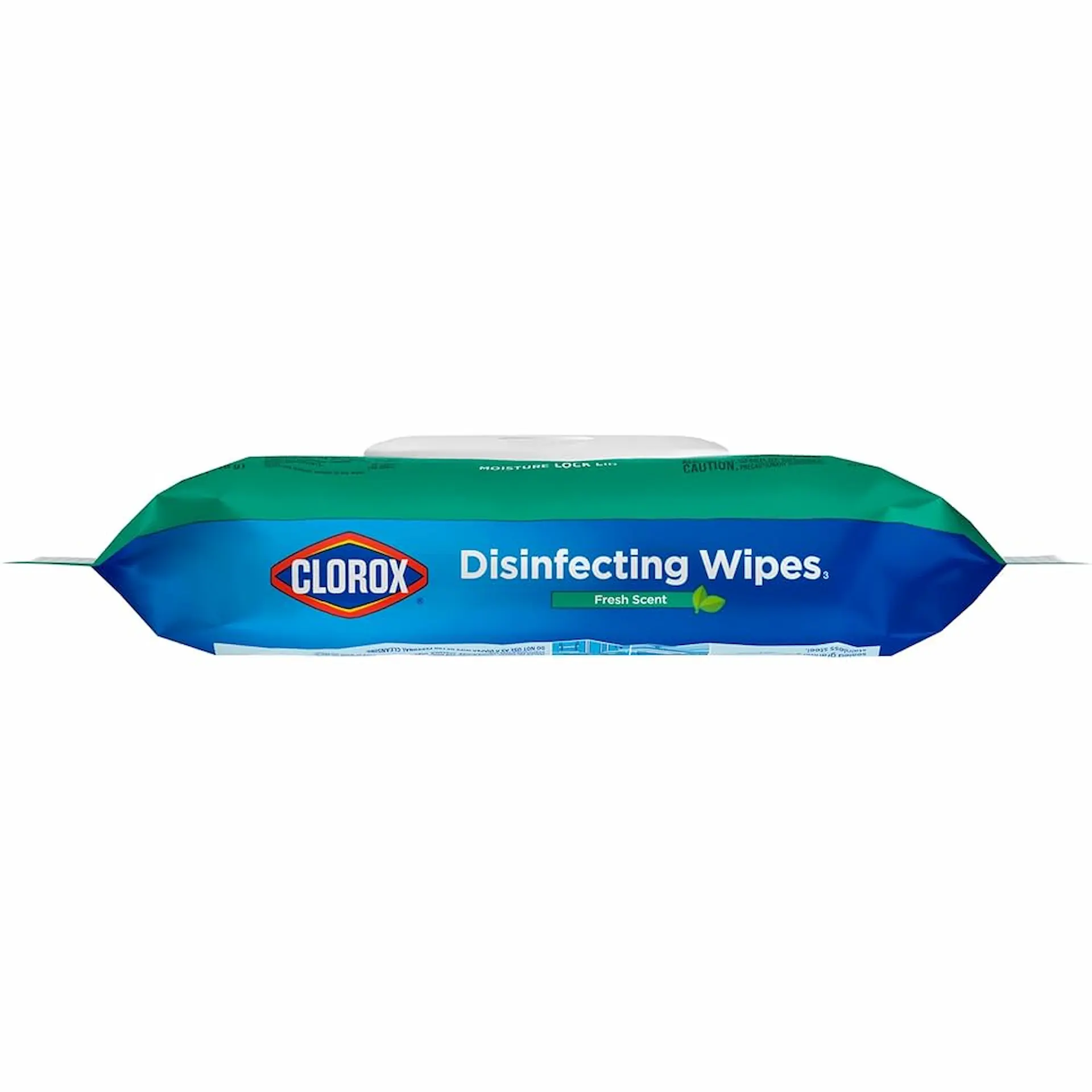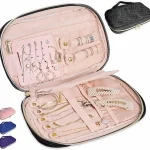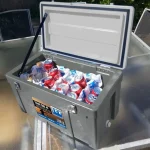Staying clean while traveling has become more than just a personal preference, it’s now a public health priority. Whether you’re navigating a crowded airport, settling into a hotel room, or grabbing a coffee at a rest stop, you’re constantly coming into contact with high-touch surfaces. That’s where the Clorox Wipes Travel Pack steps in. Compact, effective, and designed for mobility, this product solves a very real problem, how to maintain proper hygiene away from home.
You probably already know Clorox for its household disinfecting products, but this travel-sized version meets the needs of modern, on-the-move lifestyles. In this article, you’ll learn exactly what makes these wipes travel-friendly, how they perform, and why they’re considered a go-to germ-fighting tool among seasoned travelers.
What Are Clorox Wipes Travel Packs?
Clorox Wipes Travel Packs are disinfecting wipes formulated to kill 99.9% of viruses and bacteria and packaged specifically for portability. Each pack is slim, resealable, and easy to slide into backpacks, carry-ons, glove compartments, or even handbags. These are not just smaller versions of the household wipes, they are engineered to retain moisture and effectiveness even when tossed into unpredictable travel environments.
Unlike bulk containers, travel packs typically include 9–15 wipes per pouch, keeping the overall size light without sacrificing utility. The resealable top is designed to prevent drying out, a common issue with inferior travel disinfectants. Clorox has also ensured the packs meet TSA liquid rules, making them ideal for flights and security lines.
Why Are Clorox Wipes Ideal for Travel?
The biggest selling point of Clorox Travel Wipes is trust. Backed by decades of research and EPA-registered, these wipes eliminate germs quickly, with proven efficacy against pathogens like Influenza A, Salmonella, and Staphylococcus aureus. For travel, where you often can’t control your environment, this kind of rapid disinfecting power is crucial.
They’re also bleach-free, making them safer for a wide variety of surfaces and personal items like phones, tablets, and even steering wheels. Unlike sprays or liquid sanitizers, they require no additional steps, just wipe and wait. For public surfaces such as airplane tray tables, hotel remote controls, or rental car door handles, Clorox wipes offer immediate and visible cleaning action.
They’re also TSA-compliant under the 3-1-1 liquid rule, so you can carry them in your hand luggage without concerns.
Common Travel Use Cases
- On airplanes: Seatbelt buckles, tray tables, armrests
- In hotels: Light switches, TV remotes, sink handles
- At gas stations: Pump handles, restroom doors
- In ride-shares or rentals: Door handles, gear shifts, touchscreens
What Ingredients Are Inside Clorox Wipes Travel Packs?
Clorox Wipes Travel Packs contain a carefully balanced blend of disinfectants, solvents, and skin-safe components. The primary active ingredient is Alkyl C12-18 Dimethylbenzyl Ammonium Chloride, a quaternary ammonium compound (often referred to as “quats”) known for its antimicrobial efficacy.
Supporting ingredients like isopropyl alcohol improve the drying time and cleaning power, while added fragrance components mask the chemical odor typically associated with disinfectants. Importantly, these wipes are bleach-free, meaning they won’t damage surfaces or irritate skin in the way traditional bleach can.
Here’s a breakdown of key components:
- Alkyl C12-18 Dimethylbenzyl Ammonium Chloride – Antimicrobial agent
- Isopropyl Alcohol – Solvent and cleaning booster
- Fragrance – Scent control
- Preservatives – Moisture retention
These ingredients make Clorox wipes safe for non-porous surfaces and, when used occasionally, suitable for cleaning hands or children’s toys in the absence of soap and water.
How to Use Clorox Travel Wipes Safely and Effectively
Using Clorox Wipes is simple, but a few best practices maximize their effectiveness. First, ensure that the surface remains visibly wet for at least 30 seconds to 1 minute, this is the minimum contact time needed to fully kill most bacteria and viruses.
When wiping electronics like smartphones or tablets, apply gentle pressure and avoid letting excess liquid pool near charging ports or buttons. For surfaces like airplane trays or hotel counters, one wipe is generally sufficient unless the area is heavily soiled.
Avoid using the same wipe on multiple surfaces to prevent cross-contamination. If the wipe begins to dry out, discard it and use a fresh one. And while they’re technically safe for skin, Clorox still recommends using them sparingly on hands, especially for those with sensitive skin or open cuts.
Where Can You Use Clorox Wipes on the Go?
Clorox Wipes Travel Packs are incredibly versatile. Anywhere you go, germs follow, and these wipes offer a frontline defense against them. They’re effective on metal, plastic, glass, vinyl, and other non-porous surfaces commonly found in public and semi-public spaces.
Here are some typical travel settings where these wipes are especially useful:
- Airports and flights: Wipe down armrests, seatbelts, air vents, overhead controls
- Hotels and accommodations: Clean bathroom fixtures, light switches, TV remotes
- Public restrooms: Handle toilet flushers, faucets, and stall locks safely
- Rental cars: Sanitize steering wheels, gear shifts, touchscreens, and door handles
- Restaurants and cafes: Disinfect tabletops, menus, and high chairs
Using them in these situations not only protects you but also reduces the chance of carrying microbes from one environment to another.
How Does Clorox Compare to Competing Travel Wipes?
Clorox is not the only player in the disinfecting wipes space, but it consistently ranks at the top for germ-killing effectiveness, scent options, and surface compatibility. When comparing to brands like Lysol and Wet Ones, Clorox offers a broader spectrum of disinfection with verified EPA claims.
| Brand | Kill Rate | TSA Approved | Skin-Safe | Best Use Case |
| Clorox | 99.90% | Yes | Occasional | Multi-surface disinfection |
| Lysol | 99.90% | Yes | No | Hard surface cleaning |
| Wet Ones | 99.90% | Yes | Yes | Hands and skin only |
Clorox wipes offer broader utility, you can use them both for disinfecting surfaces and (sparingly) on your hands. Lysol wipes are less versatile and often carry stronger scents. Wet Ones, while ideal for skin, lack the full virucidal properties Clorox provides.
How to Store Clorox Travel Packs Correctly
Travel packs are engineered to maintain moisture, but improper storage can still compromise their lifespan. Always reseal the pack completely after each use. If stored loosely in a bag without securing the flap, the wipes will dry out within days.
Avoid leaving them in direct sunlight or extreme heat, such as inside a car during summer. High temperatures can degrade active ingredients. Conversely, freezing temperatures can cause the liquid to separate, weakening their disinfection ability.
The average shelf life of an unopened travel pack is 12 to 18 months. Once opened, aim to use the wipes within 30 days for optimal efficacy.
Where to Buy Clorox Wipes Travel Pack
You can purchase Clorox Wipes Travel Packs at major retailers such as Walmart, Target, CVS, Walgreens, and through online platforms like Amazon. Pricing generally falls between $1.99 to $3.49 per pack, depending on quantity and whether it’s part of a multi-pack.
During peak travel seasons or flu outbreaks, availability may fluctuate, so it’s wise to stock up in advance. Some sellers offer bulk bundles of 6–12 packs, which are more economical and allow you to store extras in cars, luggage, and office drawers.
Are Clorox Wipes Eco-Friendly?
Clorox Wipes are not biodegradable, as they contain synthetic fibers designed to hold moisture and resist tearing. That means they should be disposed of in regular trash, not flushed. However, Clorox has taken some sustainability steps, such as recyclable outer packaging in some product lines.
If environmental impact is a top priority for you, Clorox’s compostable wipes line may be a better fit, although those are not yet widely available in travel pack sizes.
As for chemical safety, the wipes are free from phosphates and bleach, and Clorox states that all ingredients meet safety standards set by the EPA and FIFRA (Federal Insecticide, Fungicide, and Rodenticide Act).
Best Practices for Staying Germ-Free While Traveling
Carrying Clorox Wipes is a smart move, but pairing them with other hygiene tools amplifies your protection. Always wash your hands when water is available. Use wipes for surface disinfection and follow up with sanitizer after handling public equipment.
Immediately upon boarding a plane or entering a hotel room, disinfect the most frequently touched surfaces. Keep your wipes in an outer pocket of your carry-on for fast access during boarding, meals, or restroom stops.
Who Should Always Carry Clorox Travel Packs?
If you’re part of a high-risk group or spend time in transit, these wipes should be non-negotiable.
You benefit most from travel wipes if you are:
- A parent traveling with young children, especially toddlers who touch everything
- A business traveler frequently using public transport and shared spaces
- An immunocompromised individual requiring strict hygiene
- A commuter using ride-shares, buses, or trains daily
Even infrequent travelers benefit. A single contaminated surface can lead to illness that ruins your trip, or worse, puts others at risk.
Do Clorox Travel Wipes Make a Difference?
If your goal is to travel smarter and safer, Clorox Wipes Travel Packs are more than a convenience, they’re a necessity. They offer fast, proven disinfection in a portable format that fits effortlessly into modern routines. From wiping down hotel room surfaces to disinfecting airplane trays, they provide an immediate and effective solution for germ control wherever you go.
Frequently Asked Questions About Clorox Travel Packs
Can you use them on your hands?
Yes, occasionally. While not marketed as hand wipes, they’re bleach-free and contain skin-safe ingredients in small amounts.
Do they replace hand sanitizer?
No. For hand hygiene, alcohol-based hand sanitizers are more effective and recommended for frequent use.
Are they EPA approved?
Yes. Clorox disinfecting wipes are registered with the EPA and tested against emerging viral pathogens, including SARS-CoV-2.





